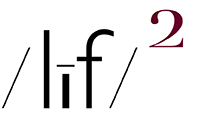(embiggenable)
(embiggenable)
(embiggenable)
(embiggenable)
MY FEELINGS, RE: STICKING YOUR NOSE WHERE IT DOES NOT BELONG when viewing a photographic print, are well know. ASIDE For those who might not know it, in my fantasy world, all of my photo exhibitions would have crowd-control barriers-stanchion + velvet rope-along the walls where my prints are displayed. The distance of the velvet rope barrier from the wall would be determined by the size of the prints. And, of course, anyone leaning over the rope would receive an invisible ray electric shock. END OF ASIDE
That written, some might wonder why I hold such a strict viewing standard. The answer to that wondering is quite simple, having to do with, iMo, the very important idea-for both picture viewing and picture making-of soft eyes.
ANOTHER ASIDE Soft eyes, for those unfamiliar with the term, refers to the art of seeing with the simultaneous, effortless combination of foveal vision-laser like focus on specific detail (a “hard” stare)-and peripheral vision-the taking in of the widest possible span and trying to catch all that is on the edges of this span (eye muscles stay relaxed) FYI, it is believed that peripheral vision is an acquired muscle-memory skill*. END OF ASIDE
So, why do I believe that soft eyes are a very important skill in the making and viewing of photographic prints? Consider this: the making of a photograph is considered to be the “art” of selecting. That is, noticing a piece of the world and isolating it via the imposition of a frame, aka: the edges of a photograph. The astute picture maker makes a decision of what include / exclude in the picture by means of that framing. And, it is the result of this decision which is creates the form-some might call it the design or composition-as perceived in the final print.
It should be needless to write, that the aware picture maker will include in his/her framing only those visual elements-actual things, shapes, lines, tones, colors, et al-that he/she believes (sometimes senses) are important to expressing what what and how they see, aka: their vision. In other words, every visual element within the frame of a picture is an integral component of the total visual statement. You can not have one without the other(s).
iMo, the only manner in which a picture maker can pull off this visual”miracle” (making something out of nothing), is with the art of seeing the world with soft eyes. And, if a viewer of such pictures desires to experience the totality of a picture makers’ vision then he/she must view a print in its totality with the use of soft eyes. And the only way that is possible is to view a print from a distance from which the eye can take in the whole image. Essentially, that means placing your foveal vision on the center of the image and letting your peripheral vision take in the rest.
And, I can write without a single, solitary shred of a doubt, that a viewer can not see the totality of a photograph with his/her nose where it don’t belong.
* when BIll Bradley, one of basketball’s all-time greats, was a young boy he walked down the main street of of his hometown and kept his eyes focused straight ahead and tried to identify objects in the windows of stores he was passing.
